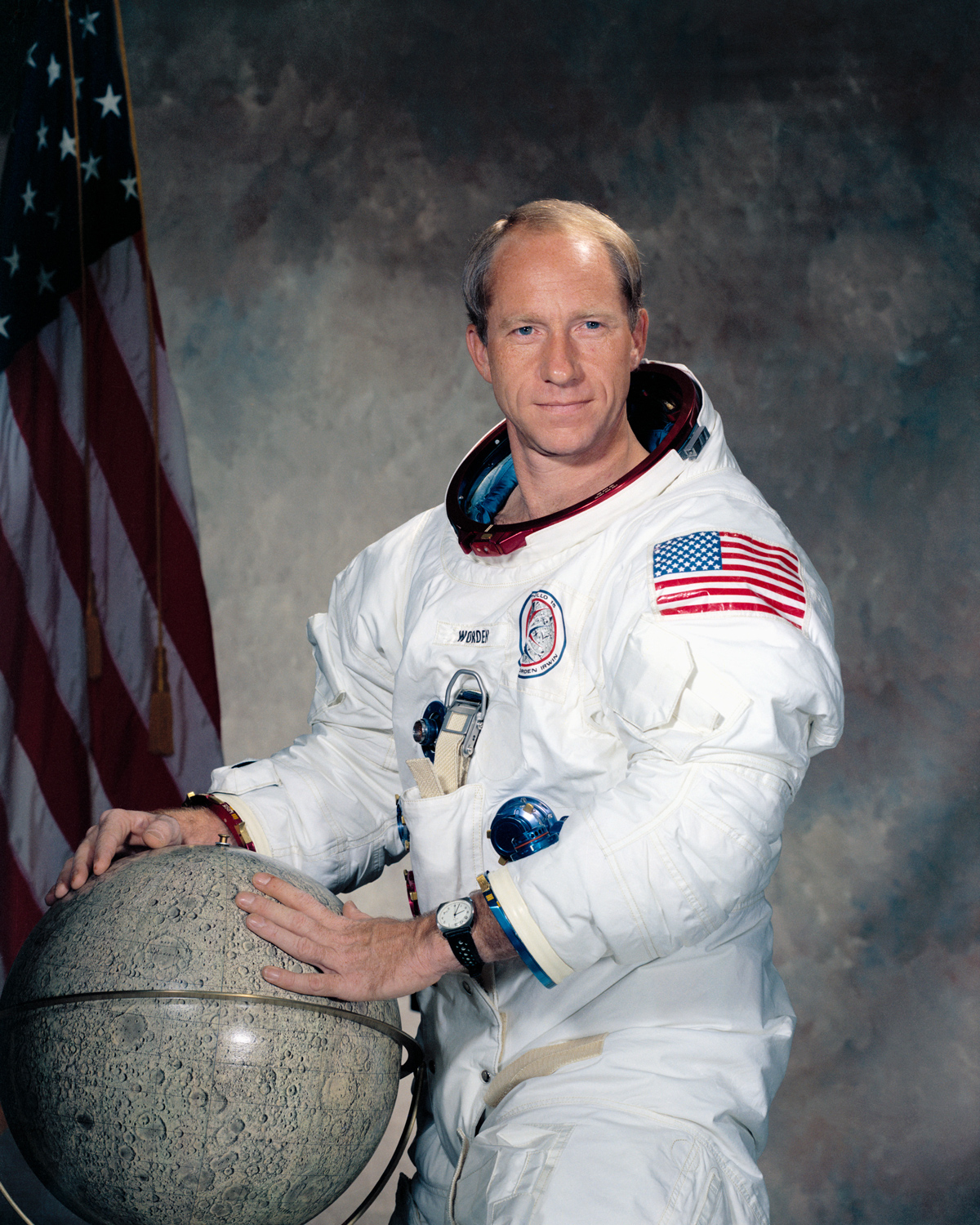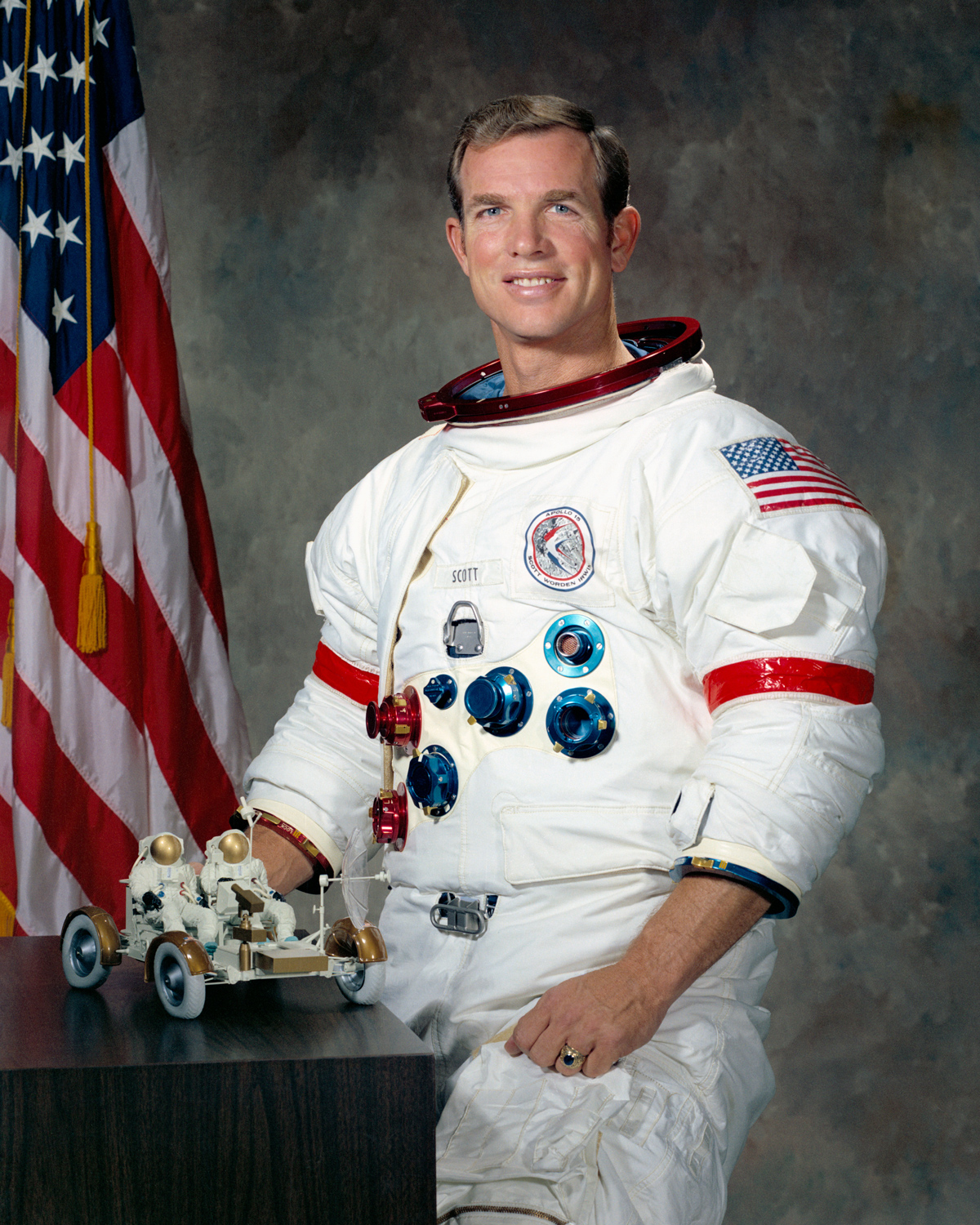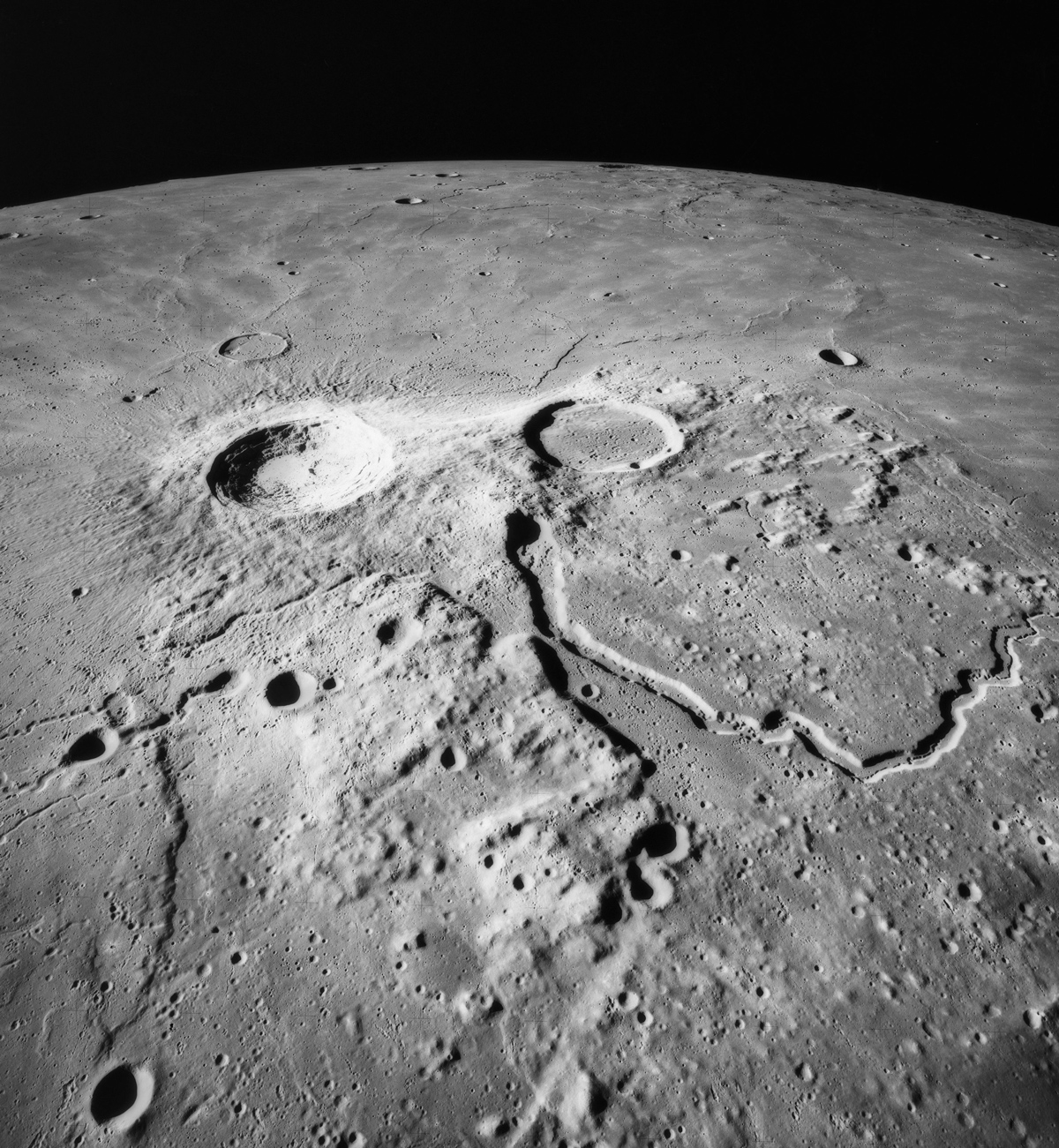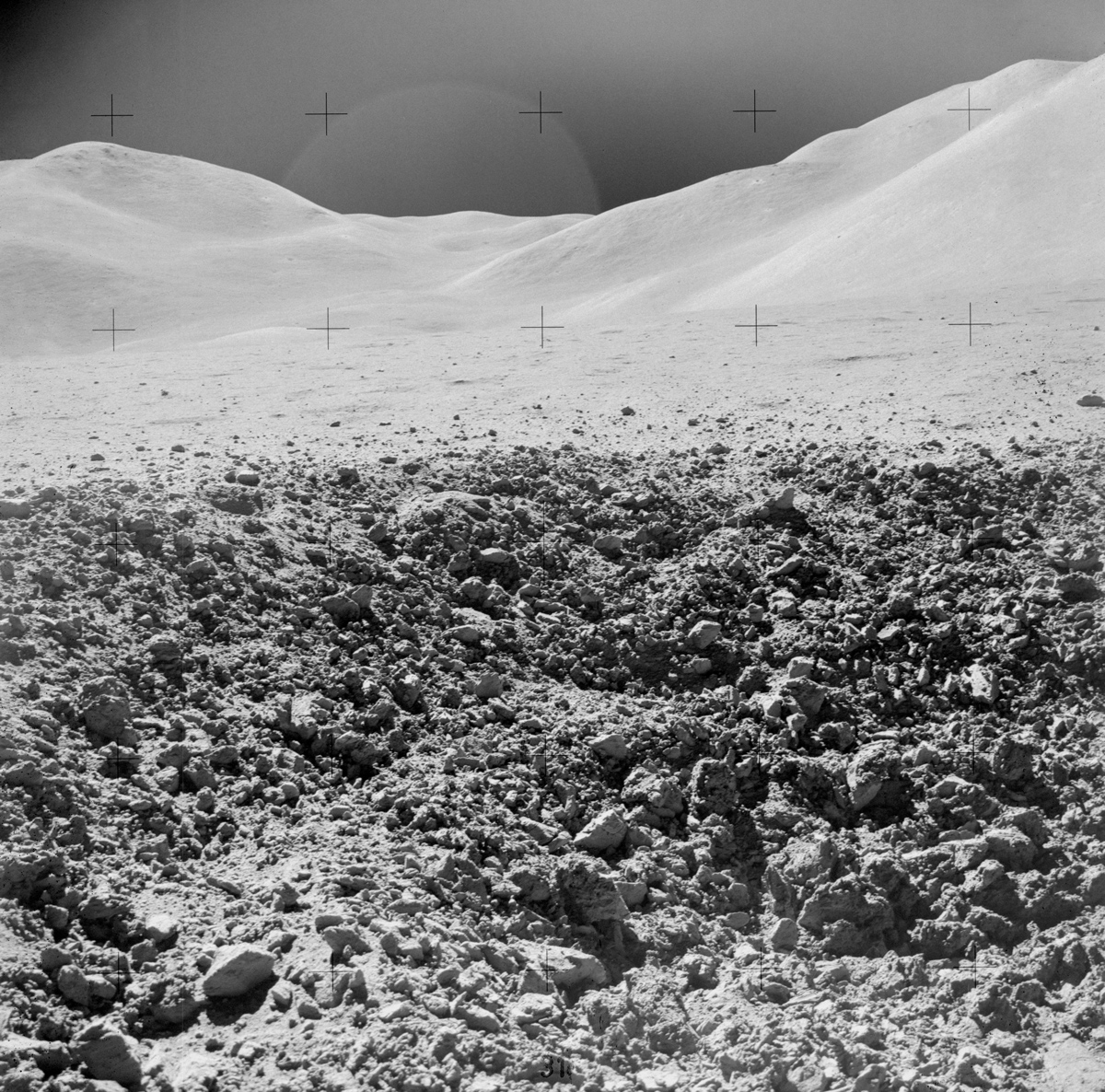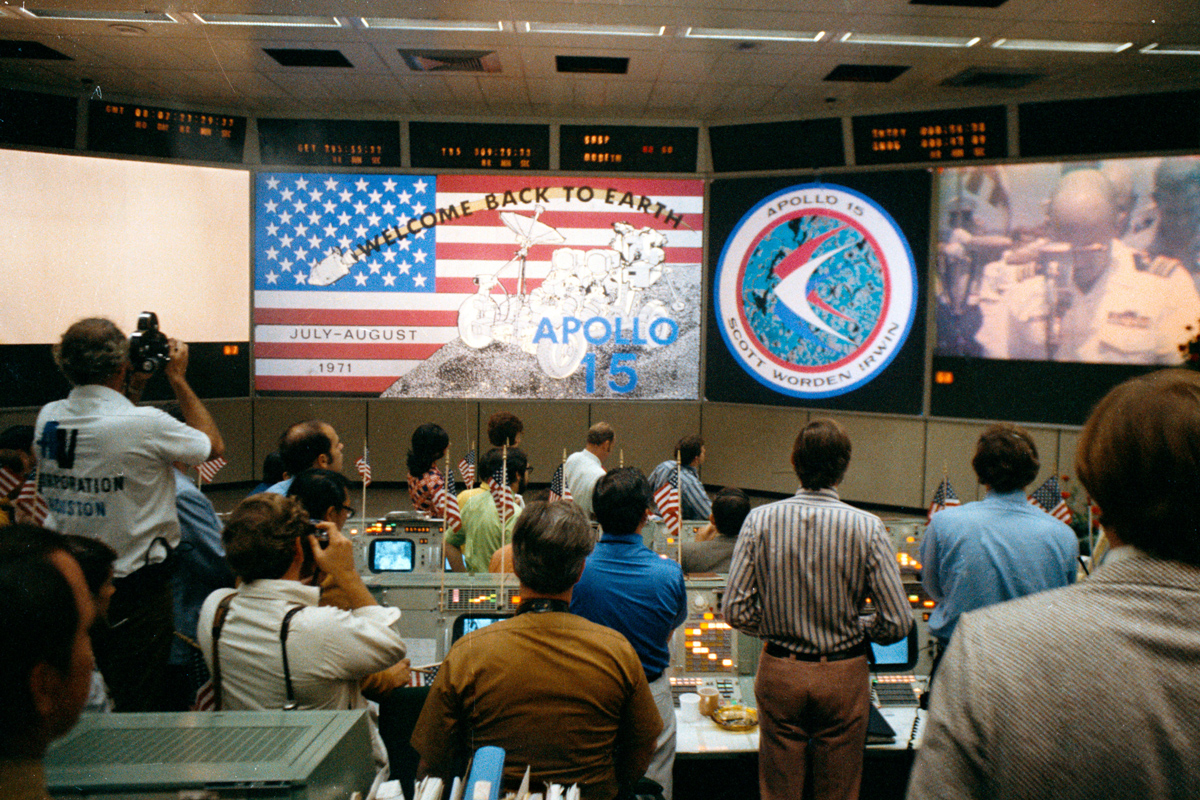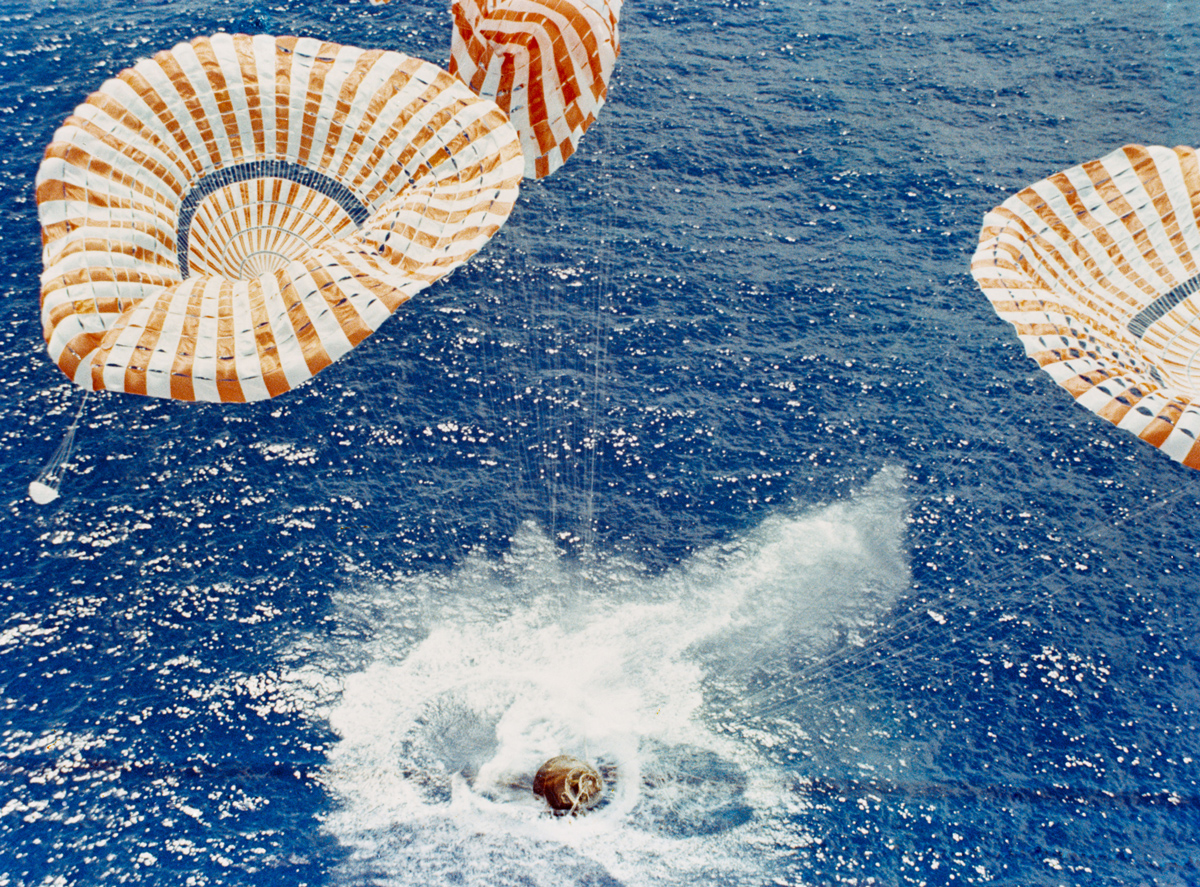Apollo 15 in Photos: A Moon Landing and the 1st Lunar Car for Astronauts
Apollo 15 Command Module PIlot.
An official NASA photo shows astronaut Alfred M. Worden, chosen to be the prime crew command module pilot for the Apollo 15 lunar landing mission.
Apollo 15 Commander
The official NASA image presents astronaut David R. Scott, chosen to be the prime crew commander for the Apollo 15 lunar landing mission.
Lunar Work
On July 31, 1971, astronaut and Apollo 15 lunar module pilot James B. Irwin stands at the Lunar Roving Vehicle, completing tasks during the first lunar surface EVA. In the foreground, the Lunar Module "Falcon" casts a shadow. Astronaut and Commander David R. Scott took the photo.
Schroeter's Valley and Aristarchus
This image of the moon's surface was captured during the Apollo 15 lunar landing mission. Schroeter's Valley meanders to the bottom and right of the image and the Aristarchus crater is the large, bright white crater to the left. Schroeter's Valley begins in the Ocean of Storms and is called Cobra Head. To the right of Cobra Head is Herodotus the crater. The image was captured with the Fairchild metric camera in the Scientific Instrumentation Module bay.
Fresh Lunar Dirt
This feature, in a close-up view, seems to be the result of a "relatively fresh" crater. The image was captured during the third lunar surface EVA of the Apollo 15 mission. In the background the Hadley Delta Mountain is visible on the right along with the Apennine Front.
Hadley Rille
Near St. George Crater, looking northwest, Hadley Rille is visible. This image was captured during the first lunar surface EVA of the Apollo 15 mission. Layering is clearly visible on the rille wall. On the right side of the rille a feature called the "Terrace" can be seen.
Completing Tasks
During a lunar surface EVA, astronaut and commander David R. Scott uses a 70mm camera and carries tongs in his left hand to gather samples. The Apennine Mountains fill the background, at about 10.5 miles (17.5 kilometers) away.
Breaking space news, the latest updates on rocket launches, skywatching events and more!
Mission Operations Control Room
On August 7, 1971, Mission Control watches as the Apollo 15 lunar landing crew is welcomed back to Earth aboard the prime recovery ship, the U.S.S. Okinawa.
Minor Failure
The Apollo 15 Command Module floats back to Earth carrying astronauts David R. Scott, commander; Alfred M. Worden, command module pilot; and James B. Irwin, lunar module pilot. One of the three main parachutes fails to deploy properly, but no harm results. Splashdown occurs at 3:45:53 p.m. CDT on August 7, 1971 north of Honolulu, Hawaii, roughly 6 miles from the prime recovery ship.
Time for Recovery
At splashdown, just 6 or so miles from the prime recovery ship — the U.S.S. Okinawa — the Apollo 15 Command Module successfully ends the lunar landing mission, bringing the prime crew home. A recovery helicopter flies them the short distance to the ship.

Christine Lunsford joined the Space.com team in 2010 as a freelance producer and later became a contributing writer, covering astrophotography images, astronomy photos and amazing space galleries and more. During her more than 10 years with Space.com, oversaw the site's monthly skywatching updates and produced overnight features and stories on the latest space discoveries. She enjoys learning about subjects of all kinds.
